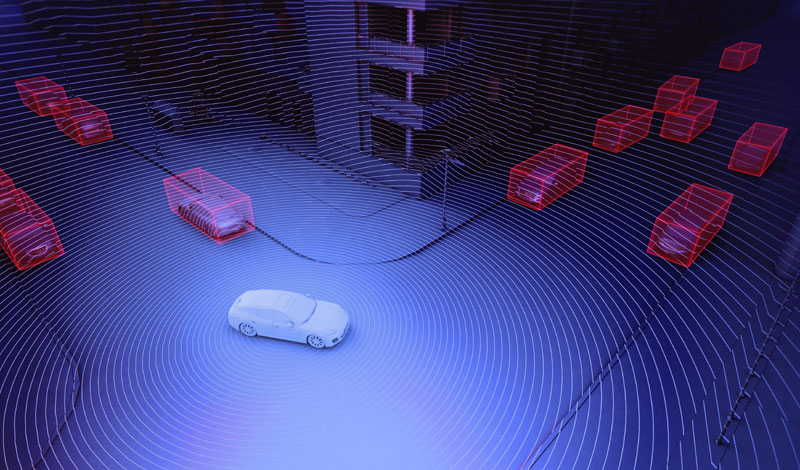
21st April 2020 New camera captures 3D images with record speed and resolution Researchers have developed the first megapixel photon-counting camera based on new-generation image sensor technology that uses single-photon avalanche diodes (SPADs).
The new camera can detect single photons of light at unprecedented speeds – which could enable much faster acquisition of 3D images for applications such as augmented reality (AR) and LiDAR systems for autonomous vehicles. "Thanks to its high resolution and ability to measure depth, this new camera could make virtual reality more realistic and let you interact with augmented reality information in a more seamless manner," said Edoardo Charbon, founder and head of the Advanced Quantum Architecture Laboratory (AQUALab) at Switzerland's École Polytechnique Fédérale de Lausanne (EPFL). His team created one of the smallest SPAD pixels ever devised and reduced the power consumption of each pixel to less than 1 microwatt while maintaining speed and timing precision. The new camera can acquire images at up to 24,000 frames per second. For comparison, 30 frames per second is the standard rate used to record video for television. "For transportation applications, this new camera could help achieve unprecedented levels of autonomy and safety by enabling multiple low-power LiDAR devices to be used on a vehicle, providing fast, high-resolution 3D views of the surroundings," said Kazuhiro Morimoto, a semiconductor device engineer working at Canon in Japan, who collaborated on this breakthrough. "In a somewhat more distant future, quantum communication, sensing and computing could all benefit from photon-counting cameras with multi-megapixel resolution."
In less than 20 years, SPAD sensors have advanced from a novelty to versions that are standard in smartphone cameras and many other devices. The success of this technology comes from the fact that SPAD sensors are extremely efficient at detecting single photons and converting them into electrical signals that are stored in a digital memory. A large format camera can be created by building an array of pixels that each contain a SPAD. For this new work, Charbon's team drew on 15 years of research at EPFL to create an extremely fast, high-resolution camera that leverages SPAD technology for advanced imaging. Their camera detects single photons and converts them to electrical signals at a record rate of 150 million times per second. Each SPAD sensor can be finely controlled to allow light in for just 3.8 nanoseconds, less than four billionths of a second. This 'shutter speed' can capture extremely fast motion or be used to increase the dynamic range – the difference between the darkest and lightest tones – of an acquired image. This record-breaking speed improves the calculations of how long it takes individual photons to travel from a source to a camera, known as time of flight. Combining this information with the ability to simultaneously capture a million pixels (1MP) produces ultra-fast 3D image reconstructions, which could prove useful in a wide variety of fields – such as automotive, robotic, security and scientific applications, including quantum imaging and ultra-high-speed imaging. A paper describing the breakthrough appears in The Optical Society: "In SPAD research, achieving a megapixel sensor has been considered one of the most important milestones for over a decade," the authors write. "The array size of our sensor is the largest, four times higher than that of the state-of-the-art sensor, while the pixel pitch is one of the smallest."
Comments »
If you enjoyed this article, please consider sharing it:
|







